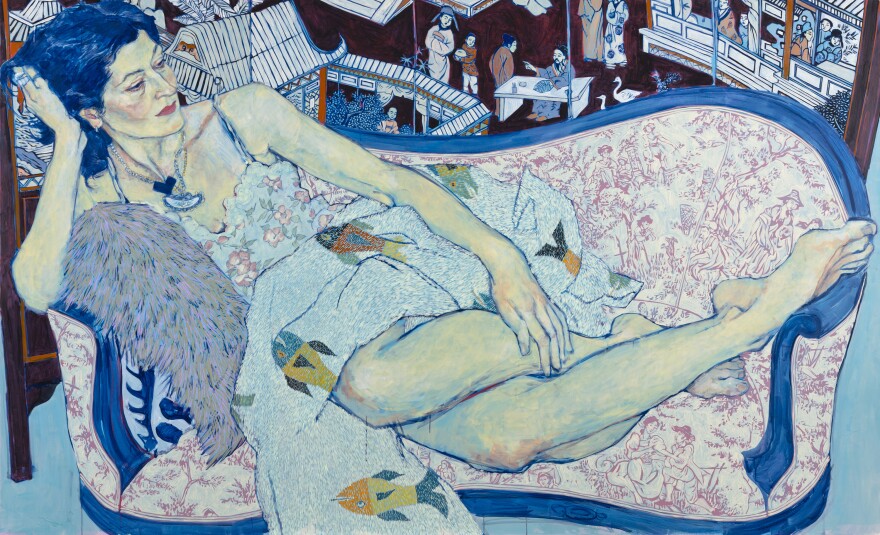
For decades, women artists have been fighting to get their work on museum gallery walls. Recently, the battle is being won: Various exhibitions across the country feature female's work. Once visitors notice the change, they see that art can be different when women wield the paintbrushes. Sometimes. And sometimes not.
Nothing much different there, except all the blue, and the beauty of the model and the painting. It's called Queen Jane Approximately — like the Bob Dylan song.
Gangloff doesn't seem to be painting blue-as-in-sad. This blue is meditative, relaxed, reflective. The woman, former model and fashion designer Jane Mayle, is a friend — as are all of Gangloff's models, says Andrea Karnes, curator of the Modern Art Museum of Fort Worth exhibition Women Painting Women.
The acrobatic Iraqi women below may be friends (although how long would you shoulder responsibility for a friend this way?). To me, they look more like relatives, maybe sisters, with their beautiful black hair, brows and red, red lips.
Kahraman paints this woman often. Contorted and multiplied as she is here, I see incredible strength. Those powerful legs, the steady gaze and humor — I laughed at first glimpse. But curator Karnes says it's a salute to "countless displaced women, past and present." Women who have suffered "disfigurement, violence, sexual abuse," standing on the shoulders of their predecessors.
So, how do women paint women? It's less about seeing them differently from men, than showing them different. For centuries, artists' male gaze saw women as objects of desire, idealized and voluptuous, with luscious white skin and dimpled knees. Women artists in this exhibition, like Alice Neel and Emma Amos and others, show women as differently beautiful: pregnant, overweight, sometimes despondent. As we are, wrapped in our truths.

Arpita Singh's mother has seen and lived through so much conflict: the bloody partition of India and Pakistan, with its religious divides, political disputes, loss and deaths. At the top of the canvas, like a frame, Arpita has written the words, "Between what I say and what I keep silent." The mother clutches her hands. Her sari is white — in India, the color of mourning. Near her, a row of dead bodies. Surrounded by chaos, the mother is ... what? Silent? Steady? Firm? Stalwart? What do you see in her face, reader?

Like so many of the 46 female artists in this exhibition, Luchita Hurtado had no money to hire models. But she had the wealth of her talent, and the will to make art. Again, like so many of these artists, Hurtado was driven to make art. She had responsibilities: a husband and children. At night, after dinner, when they'd gone to bed, curator Andrea Karnes says, "she would go into the closet and paint." Driven, "even when there was no market for her work." Hurtado said for her painting was a constant — "a need, like brushing your teeth." And when she lacked money for models, her own body became her favorite model. Hurtado didn't idealize herself. But she viewed herself from a perspective no man (or woman, for that matter) could share. Looking down toward the geometric Navajo rug, she painted her breast, her belly, hand, leg with clarity and tremendous confidence.
Do women paint themselves and one another differently? "Women artists look beyond the ideal beauty — the archetype" Andrea Karnes declares. In doing so, they create a portfolio of new archetypes.
Art Where You're At is an informal series showcasing online offerings at museums you may not be able to visit.







